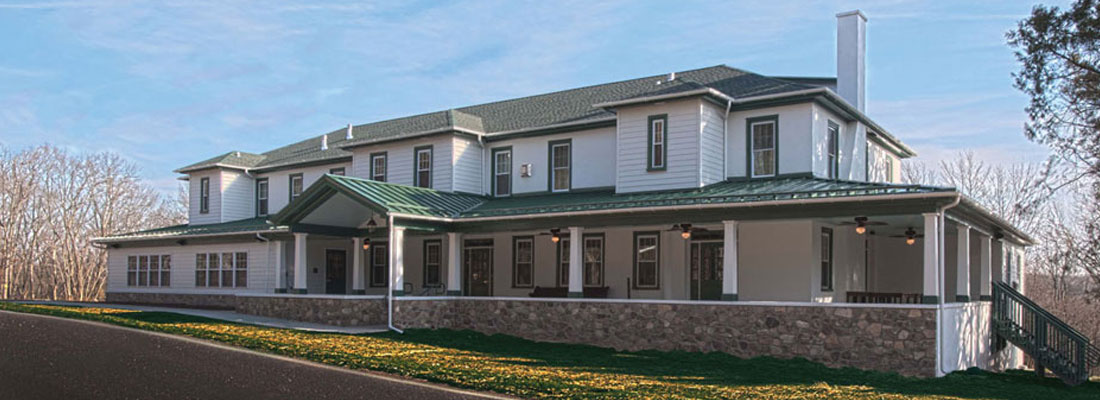The Woodside Lodge, formerly known as Woodside Manor was built by Morris Carl in 1925 on the south side of Spring Mountain. It was operated for many years as a homey countryside resort hotel. In the 1970’s the property was turned int a nursing home and later became a restaurant called the Woodside Inn.
As early as 1830 , plans had been discussed for a railroad that would run parallel to the Perkiomen, connecting the Philadelphia and Norristown roads with the Lehigh area. Operations finally began in 1868 at Perkiomen junction in Chester County. The road traveled into the into the valley through Collegeville, Rahns and Graterford, ending at Skippack Station one-half mile below town. A year or so later, it was continued to Schwenksville. The first locomotive to arrive in Schwenksville on the newly laid track was appropriately named “The Perkiomen”.
Morris Carl was the station agent in 1903. Passenger service was good and well patronized, especially during the Summer months when extra cars were added to accomodate the people who vacationed in this area. Woodside Manor, Perkiomen Inn, Spring Mountain House, The Cedars, and the Weldon House were among the establishments catering to “die Summer frischlers” (a Pennsylvania Dutch expression meaning “those Summer people who came to refresh themselves”), as well as nearby boarding houses. The high spot of the day for the local residents was to meet the trains that carried all of the vacationers.
BUCKMAN TAVERN
We’ve decided to call our pub, Buckman Tavern, as a salute to the original Buckman Tavern in Lexington Common, Massachusetts. At this ancient hostelry, built circa 1710, several dozen minutemen gathered in the early hours of the morning on April 19, 1775, to await the arrival of the British expedition in Lexington.
Definite word of the progress of the British troops reached the tavern just before sunrise. Responding to the beating of William Diamond’s drum and the ringing of the alarm bell in the belfry, Captain Parker’s company of minutemen left the security of John Buckman’s tavern to assemble in two long lines on the common. About seventy-seven colonists made the fateful stand. Following the arrival of the British, a single shot was fired: with this shot the American Revolution began.
Although best known as the headquarters of the minutemen, Buckman Tavern is also note-worthy as one of Lexington’s busiest eighteenth century taverns – it’s central location making it convenient both for churchgoers during their Sunday nooning and for drovers bringing their herds to market.
The interior of Buckman Tavern appears today very much as it did on that fateful morning in 1775, having been restored in the 1920’s by the Lexington Historical Society. During this restoration, the original seven foot-wide taproom fireplace was rediscoverd and the bar was reinstalled. Among the many items on display are the old front door, with its bullet hole made by a British musket ball during the Battle, and a portrait of John Buckman, our ancestor and the proprietor of the tavern in 1775.






